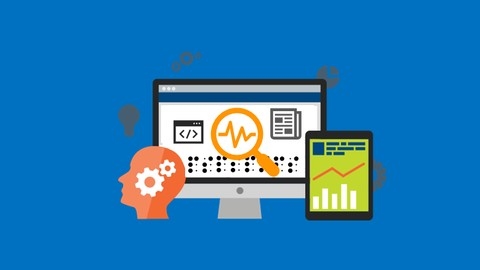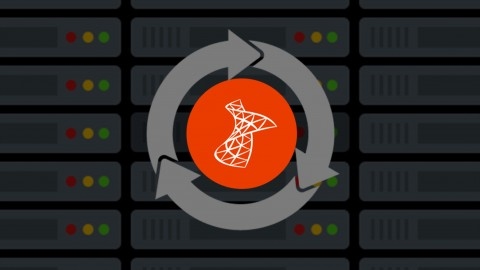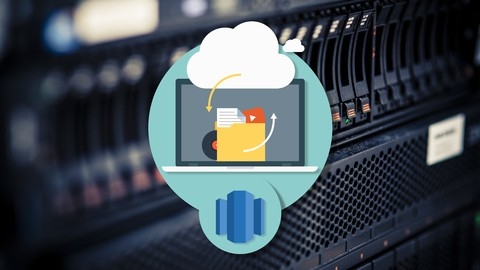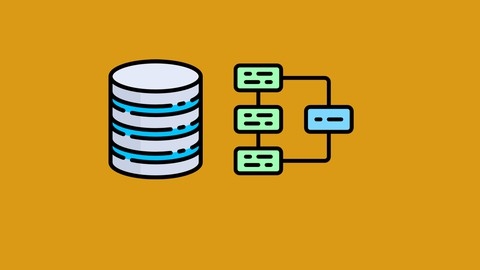Data Warehouse Fundamentals for Beginners
This course provides a comprehensive introduction to data warehousing concepts and techniques.
You will start by learning the fundamentals of what a data warehouse is and why organizations build them to enable data-driven decision making.
The course then dives into data warehousing architecture, covering centralized data warehouses, data marts, component-based architectures, cubes, and operational data stores.
You’ll understand the role of staging layers and the differences between persistent and non-persistent staging.
A major focus is on the extraction, transformation, and loading (ETL) process for populating a data warehouse.
You’ll learn about initial and incremental ETL loads, data transformation patterns, and implementing a mix-and-match incremental ETL approach.
The course provides in-depth coverage of dimensional modeling, the core technique for structuring data in a data warehouse.
You’ll learn about facts, fact tables, dimensions, dimension tables, star and snowflake schemas, different types of facts (additive, semi-additive, non-additive), and database keys.
Slowly changing dimensions (SCDs), which manage historical data in a warehouse, are explored in detail.
You’ll learn how to design and implement Type 1, Type 2, and Type 3 SCDs to handle different scenarios of changing dimensional data over time.
The ETL design process is tied back to the data warehouse structure, with specifics on how to design ETL workflows for dimension and fact tables based on the applicable SCD handling.
Finally, you’ll evaluate cloud vs. on-premises options for hosting a data warehouse environment and understand the architectural implications of each choice.
Snowflake – The Complete Masterclass
The course starts with an introduction that welcomes you and outlines what you’ll learn.
You’ll get access to all the course slides and resources right from the beginning.
In the “Getting Started” section, you’ll learn how to sign up for a free trial, log in to your account, and navigate the Snowflake interface.
The course dives into the Snowflake architecture, explaining key concepts like data warehouses, cloud computing, and the different Snowflake editions and pricing.
You’ll learn how to set up warehouses using SQL and explore tables and databases.
Loading data into Snowflake is a crucial skill, and this course covers it in depth.
You’ll learn about various loading methods, stages, and the powerful COPY command.
The course also teaches you how to transform data during the loading process and handle errors using copy options like ON_ERROR and FORCE.
One of the standout sections of the course is on loading unstructured data, such as JSON and Parquet files.
You’ll learn how to create stages, parse nested JSON data, handle hierarchies, and query Parquet files efficiently.
Performance optimization is key to getting the most out of Snowflake, and this course has you covered.
You’ll learn how to create dedicated virtual warehouses, scale up and out, maximize caching, and implement clustering for faster queries.
The course also covers loading data from popular cloud platforms like AWS, Azure, and GCP.
You’ll learn how to create storage integrations, stages, and load data from S3 buckets, Azure Blob Storage, and Google Cloud Storage.
Snowpipe, Snowflake’s continuous data ingestion tool, is explained in detail.
You’ll learn how to create pipes, configure notifications, and handle errors.
The course even covers using Snowpipe with Azure.
Other advanced topics covered include Time Travel for data recovery, Fail-Safe for data protection, Zero-Copy Cloning for efficient data sharing, and Data Sharing with secure views.
You’ll also learn about data sampling techniques and how to schedule tasks using Snowflake’s task feature and CRON syntax.
The course dives into Streams for change data capture, Materialized Views for performance optimization, and Dynamic Data Masking for sensitive data protection.
Access control is thoroughly explained, covering key roles like ACCOUNTADMIN, SECURITYADMIN, SYSADMIN, and custom roles.
You’ll learn how to connect Snowflake with popular BI tools like Power BI and Tableau for data visualization.
The course also shows you how to leverage Partner Connect to integrate with ETL tools seamlessly.
Finally, the course shares best practices for virtual warehouses, table design, monitoring, and data retention to help you optimize your Snowflake implementation.
Data Warehouse - The Ultimate Guide
You’ll start by understanding the fundamentals, including the purpose of a data warehouse and how it differs from a data lake.
The course then dives into the architecture of a data warehouse, covering the three layers: staging area, data marts, and different database systems like relational, in-memory, and cubes.
A significant portion of the course focuses on dimensional modeling, a crucial aspect of data warehousing.
You’ll learn about facts, dimensions, star and snowflake schemas, and even get hands-on experience with creating a product and category dimension using a snowflaked schema.
The course also covers the intricacies of facts, such as additivity, nulls, and different types like transactional, periodic, and accumulating snapshots.
Moving on, you’ll explore dimensions in depth, including hierarchies, conformed dimensions, degenerate dimensions, and the concept of slowly changing dimensions.
The course walks you through the different types of slowly changing dimensions (Type 0, 1, 2, and 3) and how to handle them effectively.
The ETL (Extract, Transform, Load) process is a core component of data warehousing, and this course dedicates a substantial section to it.
You’ll learn about extracting data, initial and delta loads, transforming data using basic and advanced techniques, and scheduling jobs.
The course even includes demos using Pentaho, an ETL tool, and PostgreSQL, a database system, to reinforce the concepts.
The course also covers case studies, where you’ll apply your knowledge to real-world scenarios, such as identifying business processes, defining grains, and designing fact and dimension tables.
Additionally, you’ll learn about ETL tools, choosing the right one, and the differences between ETL and ELT (Extract, Load, Transform).
Once you’ve mastered the fundamentals, the course explores using a data warehouse, including common use cases and connecting it to Power BI for data visualization.
You’ll also learn about optimizing a data warehouse through indexing techniques like B-tree and bitmap indexes.
Finally, the course touches on modern data warehouses, discussing the benefits of cloud versus on-premise solutions, massive parallel processing, and columnar storage.
Snowflake Masterclass[stored proc+demos+Best practices+Labs]
The course begins with a high-level overview of Snowflake’s architecture, including its unique shared-nothing architecture and how it enables efficient query processing and concurrency control.
You’ll set up your Snowflake environment, create databases and tables, and explore the web console.
Next, you’ll dive into data loading techniques, learning how to load structured and unstructured data from various sources like local systems, AWS S3, Google Cloud Storage, and Azure Blob Storage.
The course covers different staging mechanisms, file formats like Parquet, and best practices for optimizing data loading performance.
With your data loaded, you’ll learn about performance tuning, clustering, and leveraging Snowflake’s query acceleration features like QAS and SOS.
The course also explores materialized views, dynamic tables, and how to handle slowly changing dimensions effectively.
Data sharing and security are key topics covered in the course.
You’ll learn how to set up secure views, reader accounts, and data masking policies to protect sensitive information.
The course also delves into access control, role hierarchies, and managing permissions at various levels.
Throughout the course, you’ll work with real-world datasets and scenarios to apply your knowledge.
Hands-on labs and challenges will reinforce your understanding of concepts like data loading, unloading, external tables, and more.
Advanced topics like stored procedures, transactions, error handling, and using Snowflake with Spark are also covered.
You’ll learn best practices for cloning, fail-safe, time travel, and disaster recovery to ensure data integrity and business continuity.
By the end of the course, you’ll have a solid foundation in Snowflake and be equipped with the skills to design, implement, and optimize Snowflake solutions for your data warehousing needs.
Data Warehouse ETL Testing & Data Quality Management A-Z
This course provides a comprehensive guide to data warehousing ETL testing and data quality management.
You will start by understanding the fundamentals of ETL/ELT processes and data quality dimensions.
The course then dives into building database views to test various data quality rules like completeness, uniqueness, validity, consistency, and integrity.
Next, you will learn to create data quality dashboards and monitoring systems.
Through hands-on exercises, you will build dashboards for completeness, uniqueness, validity, consistency, integrity, and data profiling.
These dashboards will help you visualize and track data quality issues.
The course covers key concepts like database views, data connections, and dashboarding tools through practical exercises.
You will gain experience in designing test cases, implementing data quality checks, and monitoring data health.
By the end, you’ll have a solid understanding of ETL testing and data quality assurance techniques essential for maintaining a robust data warehouse.
Modeling Data Warehouse with Data Vault 2.0
This course provides a comprehensive overview of data warehousing concepts, starting with traditional modeling techniques and progressing to the Data Vault 2.0 methodology.
You’ll begin by learning about Entity Relationship Diagrams (ERDs), database normalization forms, and the differences between OLTP and data warehousing systems.
The course then dives into dimensional modeling, covering star and snowflake schemas, slowly changing dimensions, and conformed dimensions.
You’ll practice converting an ERD to a 3NF model and then to a dimensional model.
Next, you’ll explore the fundamentals of the Data Vault 2.0 approach, including its core components like Hubs, Links, and Satellites.
The course covers various types of Link tables, such as transactional, hierarchical, and exploration links, as well as different Satellite table types like multi-active, status tracking, and effectivity satellites.
You’ll learn about the Data Vault architecture, including the staging area, enterprise data warehouse layer, and information layer.
The course also introduces business vault concepts like Point-in-Time tables, Bridge tables, and Reference tables.
Additionally, you’ll understand how to build dimensional models within the Data Vault framework, covering Type 1 and Type 2 dimensions with single and multiple satellites, as well as fact tables.
The course compares the differences between 3NF, dimensional models, and the Data Vault approach, allowing you to practice converting 3NF and dimensional models to the Data Vault structure.
Data loading architectures, including full and incremental loads (batch and streaming), are covered, along with the loading logic for Hubs, Links, and Satellites.
Finally, the course touches on integrating Data Vault with big data technologies and explores the Agile methodology’s alignment with the Data Vault approach.
Implementing a Data Warehouse with SQL Server 2012
This course provides a comprehensive overview of implementing a data warehouse with SQL Server 2012.
You’ll start by learning the fundamentals of data warehouses, including key concepts like dimension tables, fact tables, and ETL (extract, transform, load) processes.
The course dives deep into working with SQL Server Integration Services (SSIS), which is the primary ETL tool in SQL Server.
You’ll learn how to set up SSIS, create SSIS projects, and understand the control flow and data flow components.
The course covers essential tasks like adding connection managers, working with variables and expressions, and using various data transformation techniques.
One of the highlights is the extensive coverage of ETL processes using the SSIS Data Flow Task.
You’ll learn about different data source components, transformation types (like Lookup, Fuzzy Lookup, and Text Mining), and how to handle slowly changing dimensions.
The course also touches on data quality services and scripting in SSIS packages.
Deploying and managing SSIS packages is another key area covered.
You’ll learn how to execute packages, create deployment utilities, and enable logging.
The course also teaches you how to debug SSIS packages effectively, handle errors, and secure sensitive data within packages.
Throughout the course, you’ll find numerous demos that walk you through practical examples, reinforcing the concepts you’ve learned.
The quizzes at the end of each chapter will help you assess your understanding of the material.
Learn DBT from Scratch
This course provides a comprehensive introduction to dbt (data build tool) and its integration with Snowflake.
You will learn how to connect your dbt account to Snowflake and start querying data.
The course covers the fundamentals of dbt models and tests, including different types of materializations, tables, views, incremental models, and ephemeral models.
You will gain an in-depth understanding of advanced configurations, testing, and creating custom tests.
The course also covers deploying models using the command line and setting up dbt Cloud.
Additionally, you will explore advanced topics such as hooks, snapshots, sources, and macros.
The course emphasizes best practices, including environment setup, styling with common table expressions, using tags, limiting data, and continuous integration with Github.
By the end of this course, you will have a solid foundation in dbt and be able to effectively manage and transform data in Snowflake using dbt.
Hands-on with Amazon Redshift
The course starts by introducing you to the concept of a data warehouse and its importance.
It explains what a data warehouse is and highlights the shortcomings of self-owned data warehouses.
You’ll learn about the benefits of using a public cloud data warehouse like Amazon Redshift.
The course covers the key advantages of Redshift, such as its scalability, performance, and cost-effectiveness.
You’ll gain insights into how companies leverage Redshift for their analytics needs and explore third-party visualization tools that can be integrated with Redshift.
Moving on, you’ll dive into the basics of Redshift.
The course explains Redshift’s architecture, data loading processes, and data distribution concepts.
You’ll get hands-on experience with creating an AWS account, setting up a Redshift cluster, configuring SQL Workbench, loading data into S3, and querying the Redshift cluster through practical labs.
The advanced topics section focuses on best practices for data loading and query performance tuning.
You’ll learn techniques to optimize data ingestion and query execution in Redshift.
Additionally, you’ll have the opportunity to connect Tableau to Redshift and explore its usage.
These practical exercises will reinforce your understanding of Redshift and its integration with other AWS services and tools.
Data Warehouse Developer-SQL Server/ETL/SSIS/SSAS/SSRS/T-SQL
This course provides a comprehensive overview of working with SQL Server for data warehousing.
You’ll start by learning how to set up SQL Server and its related tools like SQL Server Management Studio (SSMS) and Visual Studio.
The course covers the fundamentals of data warehousing, including the differences between databases and data warehouses, as well as enterprise data warehouses.
You’ll dive into designing a data warehouse, from logical design to physical implementation details like dimension tables.
A major focus is on the ETL (Extract, Transform, Load) process using SQL Server Integration Services (SSIS).
You’ll learn to create SSIS projects, explore data sources, implement control and data flows, debug packages, handle errors, and log events.
The course also covers incremental ETL processes, extracting and loading modified data, and handling changing dimensions.
You’ll learn to deploy and configure SSIS solutions, including using SQL Server Agent for scheduling.
Data quality is emphasized, with sections on using SQL Server Data Quality Services to cleanse data and find duplicates, which can be integrated into SSIS data flows.
For consuming and analyzing data warehouse data, you’ll learn about business intelligence tools like SQL Server Reporting Services (SSRS) and SQL Server Analysis Services (SSAS).
You’ll create SSRS and SSAS projects and use them for reporting and data analysis.
Finally, you’ll get hands-on with Transact-SQL (T-SQL), covering basics like data types, CRUD operations, creating databases/tables, and working with views and stored procedures.
Throughout the course, you’ll work with tools like SQL Server, SSMS, Visual Studio, SSIS, SSRS, and SSAS to gain practical experience in data warehousing concepts and processes.
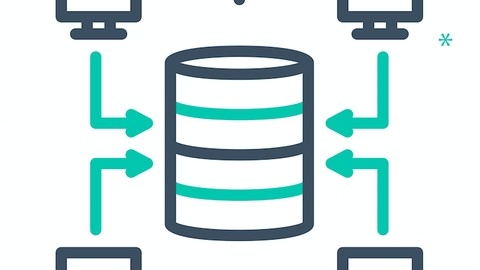



![Snowflake Masterclass[stored proc+demos+Best practices+Labs]](/img/best-snowflake-courses-udemy/2209466_SnowflakeMasterclassstoredprocdemosBestpracticesLabs.jpg)
